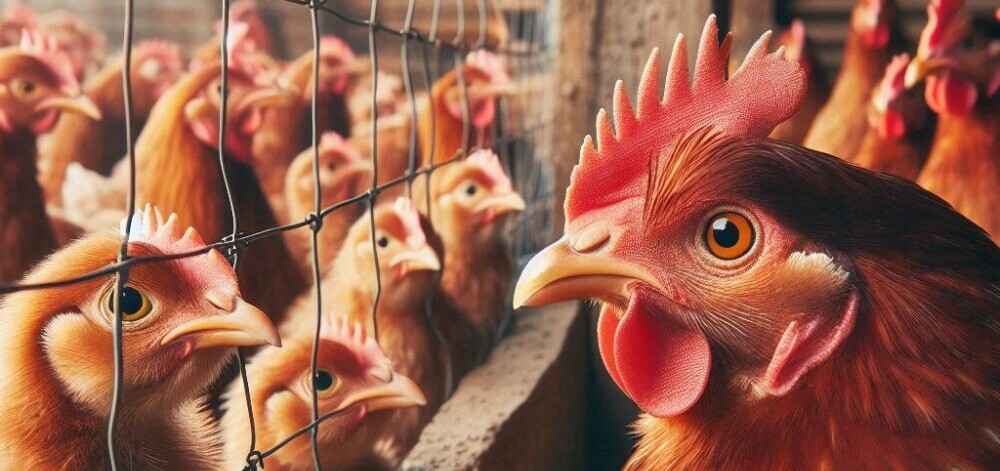
Bringing new chickens into your established flock can feel like a real-life game of chess, and while it’s not rocket science, it requires a bit of strategy. You can’t just toss them in and hope for the best.
The social scene for chickens is a bit more complex than it seems. You might think it’s just a bunch of birds scratching around, but in reality, these feathered ladies have their pecking orders to sort out.
It’s pretty common to face challenges like aggression or territorial skirmishes when you introduce new chickens to a flock. This pecking order isn’t just some random thing—it’s how chickens establish social hierarchy, and believe me, they take it quite seriously. Nobody likes a frenetic flock where everyone is trying to show who’s boss.
To keep the peace and ensure that your new cluckers integrate smoothly, it’s crucial to understand the dynamics at play. Think of it like starting a new job: you wouldn’t want to be thrown into a meeting on your first day with no intro, right?
You need a plan, and that plan should be about easing stress and preventing unnecessary fights between your new and existing birds.
By strategizing the introduction, you’re setting up a welcoming party instead of a battlefield. This guide is all about making that transition as smooth as a well-oiled machine, ensuring happy, healthy chickens in a harmonious environment.
Essential Preparations Before Introduction
Before any introductions can happen, prep work is key. A good starting point is understanding the need for a quarantine period. It’s not just about keeping your new chicks healthy, but also protecting them and your existing flock from potential diseases.
Ideally, a quarantine should last for 3 to 4 weeks. This period is your chance to observe any signs of illness—they might be subtle, like sneezing or droopy feathers, but catching them early can save you from bigger issues later.
While your new birds are in quarantine, give them a thorough health check. Keep an eye out for things like mites, lice, or any symptoms that might scream ‘not today, germs!’ Vaccination might also be something to consider, depending on where you’re from and what your vet suggests.
After health checks, think about housing. Construct a separate area—a temporary pen that lets your new chickens see their future roommates without being able to touch them. This allows them to get acquainted without the immediate risk of clash or territory fights. It’s like setting up a coffee date before jumping straight into moving in together—getting familiar at a comfortable pace.
These steps help set the stage for a peaceful introduction. Each part of the process is about creating a safe, less stressful environment for your flock to get to know each other, which is all part of building a cohesive chicken community.
Effective Strategies for Integration
Getting your chickens to hang out happily can feel like orchestrating a mini peace treaty. Start with a strategy known as the “See But Don’t Touch” period.
This involves setting up side-by-side pens where they can see each other, share a few clucks, but can’t physically interact. It’s like a polite nod across the fence without letting anyone jump over just yet. A good stretch of 1–2 weeks usually does the trick, reducing that initial bout of ‘who the heck are you?’ vibes.
After the acquaintanceship period, it’s time to allow some supervised free-ranging. This is where things get a bit more personal. Let the chickens mingle in a neutral space where neither group feels like they have the home turf advantage.
Keep these interactions short at first, just to test the waters. Your job as the supervisor is to monitor how they interact and be ready to step in if things get too rowdy (and they probably will, depending on the breeds you have).
Once the chickens are more comfortable with each other, it’s time to think about gradually integrating the newcomers into the main coop. Do it when everyone’s had a calm day—maybe a bit sleepy from pecking at scratch grains.
Make sure your coop has enough space and resources like feeders and waterers to avoid stirring new conflicts. Slow and steady wins this race, setting the scene for a peaceful flock life.
Managing Chicken Behavior and Pecking Order
Chickens aren’t just flapping around aimlessly—they’re navigating a social structure that’s as complex as a soap opera. Understanding the pecking order is crucial. This hierarchy gives order to the flock, where each chicken knows its place. While establishing this order, expect some displays of dominance, such as pecking or chasing. Don’t worry, it’s all part of their social ballet, just ensure it doesn’t escalate beyond that.
When aggression creeps into the chicken yard, it’s important to manage it effectively. Start by adding distractions—items like hanging treats or cabbage can keep them occupied and relaxed. Multiple feeding stations help reduce competition, so no chicken feels left out or has to fight for its fair share.
Your coop and run setup can either ease or exacerbate tensions. Ensure there are plenty of perches and hiding spots; this gives less dominant birds a chance to retreat and feel safe without being picked on. These simple changes can significantly reduce bullying and create a more balanced environment.
By keeping these insights in mind, you’ll soon see your flock settle into a peaceful routine. Just like people, chickens need their own space and time to adjust to new members, and your proactive management plays a huge role in making this happen.
Evaluating the Success of Your Efforts
Seeing your flock strutting around without a care in the world is the ultimate sign of a job well done. Harmony among chickens looks like minimal squabbles and seamless sharing of space and resources. It means you’ve moved from cautious see-and-peck to a united clucking chorus.
To evaluate success, listen and watch closely. Chickens that aren’t stressed peck and preen, go about their business without unnecessary noise or scuffling. Reduced vocalizations usually point to lower stress levels. When everyone’s getting their fill at the feeders without tussling, it’s a good sign your flock is gelling nicely.
Keep an eye out for squabbles over resources or space becoming infrequent or half-hearted. It’s typical for chickens to have minor jostles—it’s their way of reminding each other of the house rules. As long as these are short-lived and no one’s feathers are permanently ruffled, you’re seeing healthy interaction.
When you recognize these signs, pat yourself on the back. A little patience and effort have paid off, leading to a contented, integrated flock. Knowing what peaceful flock harmony looks like will help in managing and enjoying your chickens for the long term.
Addressing Challenges and Maintaining Order
Even with the best-laid plans, sometimes chickens just don’t get along. Persistent bullying can crop up, often from more dominant personalities who see new arrivals as threats. If this happens, identify the bullies and consider separating them temporarily. This little time-out can often break the cycle and give newcomers a chance to settle in without fear.
During the integration process, injuries may occur, though they’re usually minor. Keep a keen eye on any hurt chickens and provide first aid: clean wounds and use an antiseptic spray to ward off infections. If injuries seem severe or don’t heal, consulting a vet is a wise move.
For sustained harmony, keep an ongoing eye on your flock dynamics. Regularly observing who’s mingling with whom can give you early warning of potential issues. Providing adequate space, food, and water is crucial to avoiding fresh disputes over resources. This approach not only prevents trouble but also helps maintain a happy, thriving flock long after the introductions are old news.
Good luck to you. Enjoy your flock!
Dave

Chickenmethod.com


